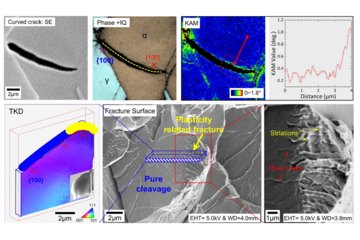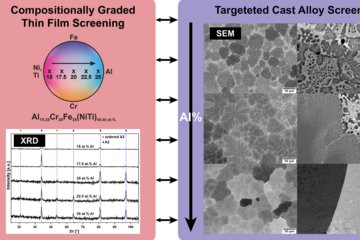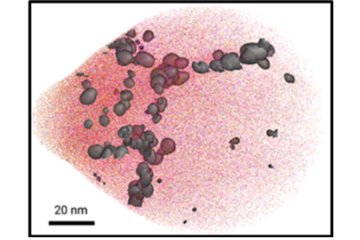All genres
1701.
Talk
Mesoscopic Modeling of the dynamics of red blood cells. Seminar talk at Ruhr-Universität Bochum, Lehrstuhl für Biophysik, Bochum, Germany (2010)
1702.
Talk
Solving Elastoviscoplastic Mechanical Boundary Value Using a Spectral Method. Evaluierung des Christian-Doppler-Laboratorium für Werkstoffmechanik von Hochleistungslegierungen, Garching, Germany (2010)
1703.
Talk
Ab initio based multiscale modeling of biological composites: Example of the exoskeleton of the lobster Homarus Americanus. Colloquium Lecture, Center for Nanoscience CeNS, Ludwigs-Maximilians Universität München, München, Germany (2010)
1704.
Talk
Towards the limits of strength: Design and understanding of ultra high strength steels. Colloquium, Ludwig-Maximilians-Universität, München, Germany (2010)
1705.
Talk
Crystal mechanics of the martensitic transformation: Crystal plasticity, ab initio models, experiments. Colloquium Lecture, Institute for Mechanics, University of Dortmund, Dortmund, Germany (2010)
1706.
Talk
Using ab-initio based multiscale models and experiments for alloy design. Colloquium Lecture, Institute for High Performance Computing, Agency of Science, Technology and Research, Singapore City, Singapore (2010)
1707.
Talk
Compositional Dependence of the Mechanical Properties of Laves Phases in the Fe–Nb(–Al) and Co–Nb(–Al) Systems. MRS Fall Meeting 2010, Boston, MA, USA (2010)
1708.
Talk
Impurity segregation at CuInSe2-based grain boundaries. 3rd International Conference on "Advanced Composite Materials Engineering", COMAT 2010, Brasov, Romania (2010)
1709.
Talk
Effect of grain refinement to 1 µm on deformation and fracture mechanisms in ferrite/martensite dual-phase steels. 2nd International Conference on Super-High Strength Steels SHSS, Peschiera del Garda, Italy (2010)
1710.
Talk
Identification of fundamental materials‐design limits in ultra lightweight Mg–Li alloys via quantum-mechanical calculations. Multiscale Materials Modeling, Freiburg, Germany (2010)
1711.
Talk
Arthropod cuticle: A biological multi-functional composite used as template for nano-to-macro-scale hierarchical modeling. Multiscale Materials Modeling, Freiburg, Germany (2010)
1712.
Talk
Multi phase cellular automaton simulation of the heat treatment of dual phase steel. MMM 2010 Fifth International Conference Multiscale Materials Modeling, Freiburg. Germany (2010)
1713.
Talk
Surface Topographies after Nanoindentation and their Utilization to Quantify the Plastic Anisotropy of Gamma-TiAl on the Single Crystal Length Scale. MMM 2010, Freiburg, Germany (2010)
1714.
Talk
Crystal plasticity modeling and experiments to improve the micromechanical understanding of single crystal gamma-TiAl and gamma-TiAl based microstructures. MMM 2010 Fifth International Conference Multiscale Materials Modeling, Freiburg, Germany (2010)
1715.
Talk
Design principles of Arthropod cuticle evaluated experimentally and by ab initio-basedmultiscale simulations. Ringberg Symposium 2010, Molecular Bionics - From Biomineralization to Functional Materials, Ringberg Castle, Rottach-Egern, Germany (2010)
1716.
Talk
Combining ab-initio based multiscale models and experiments for structural alloy design. Colloquium Lecture, Australian Microscopy & Microanalysis Research Facility, The University of Sydney, Sydney, Australia (2010)
1717.
Talk
Analyzing blood properties by simulating suspensions of deformable particles: Shear stress and viscosity behavior. ICAMS Scientific Retreat, Akademie Biggesee, Attendorn (2010)
1718.
Talk
Ab initio based multi-scale approaches to the elasticity of polycrystals. ICAMS Scientific Retreat, Akademie Biggsee, Attendorn, Germany (2010)
1719.
Talk
Crustacean cuticle: An example to study the influence of chemical composition and microstructure on the mechanical properties of hierarchically structured biological composite materials. Workshop Prospects in BIONIC, Leoben, Austria (2010)
1720.
Talk
Computational Crystal Plasticity. Invited keynote lecture, Conference on Optimising Performance Through Integrated Modelling of Microstructure (OPTIMoM), Cambridge, UK (2010)











